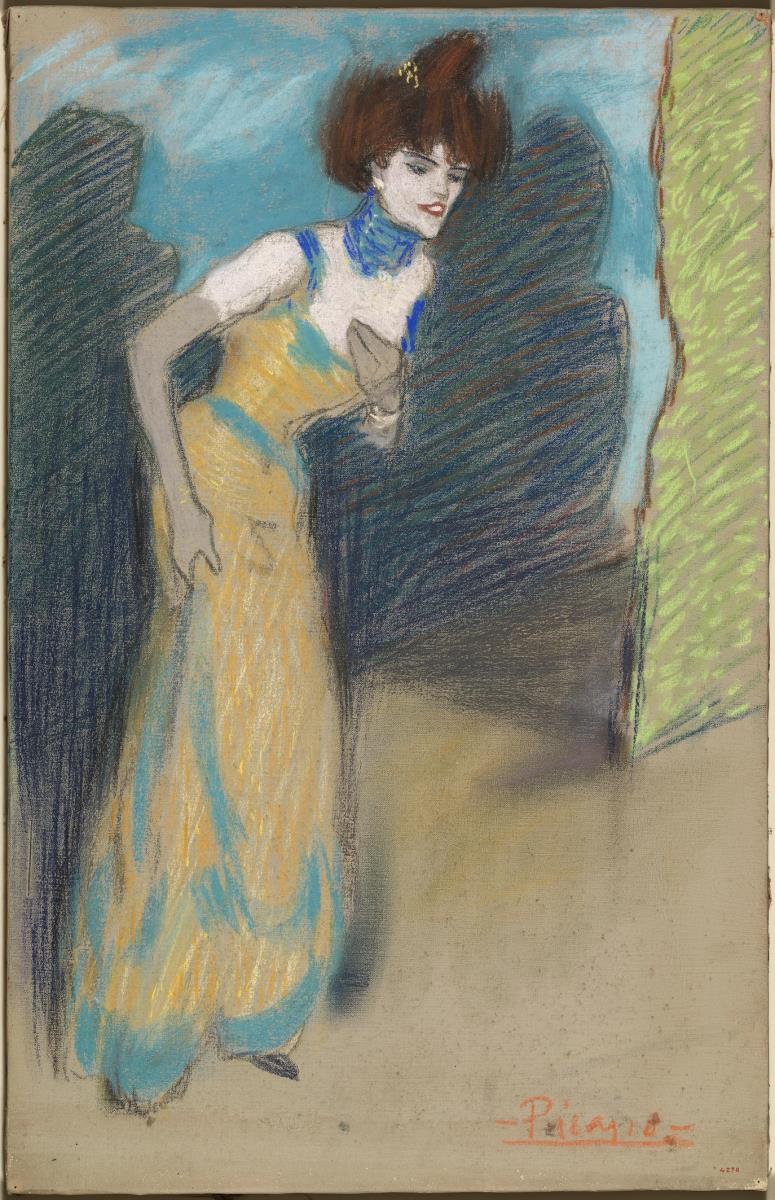The End of the Performance

The End of the Performance
The End of the Performance
Picasso arrived in Paris in autumn 1900 driven by aspirations of a vital and artistic nature, and inspired by many of the artists admired in Barcelona’s modernista circles such as Toulouse-Lautrec, Degas or Manet. Seduced by the bohemian atmosphere of cafés and cabarets, he would introduce its characters into his works, which became peopled with friends and acquaintances and the artists performing in the shows he frequented.
In "The End of the Performance" a Parisian vedette bows to the audience at the end of her act, wearing her red hair tied up in a bun, characteristic long gloves, a close-fitting dress and a wide choker. Picasso portrays an elegant performer, slender and delicate, a far cry from the grotesque images of cabaret singers rendered by Toulouse-Lautrec. The figure stands out against a vague setting that seems to represent an interior. The pastel is applied in long brushstrokes on the décor and on the woman’s dress and hair, giving the impression of a work quickly sketched, while a more compact application of paint to the areas of skin and the gloves affords the figure greater substance.
Special mention should be made of the blackness of the character’s eyes and eyebrows, and her red lips, features that give her a radiant expression and attract the attention of the viewer. Artists on stage, either performing or bowing to audiences, were popular motifs in the early twentieth century and as such were explored by masters like Degas, Steinlen and Toulouse-Lautrec.
The museum also owns "La diseuse" (MPB 4.276), a composition that resembles "The End of the Performance", and another portrait of a cabaret artist in charcoal on paper. The three works were purchased in 1932 by the Junta de Museus [Board of Museums] from private collector Lluís Plandiura and were added to the Sabartés donation when the Museu Picasso was founded.
73 cm x 47 cm
Purchase Plandiura, 1932
MPB 4.270








